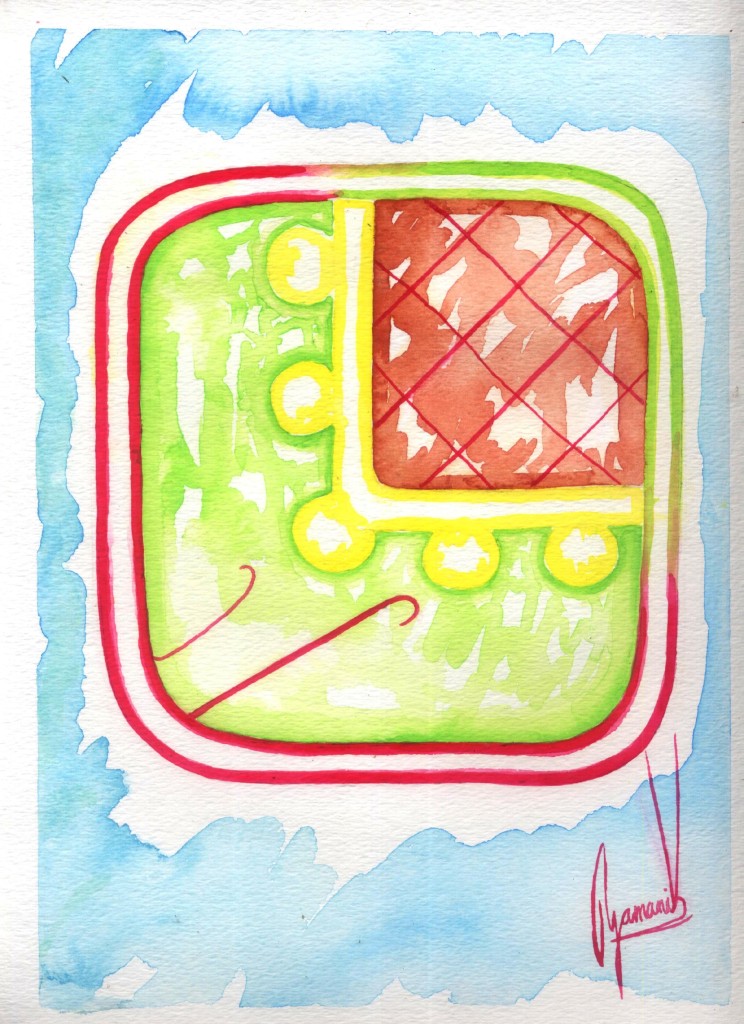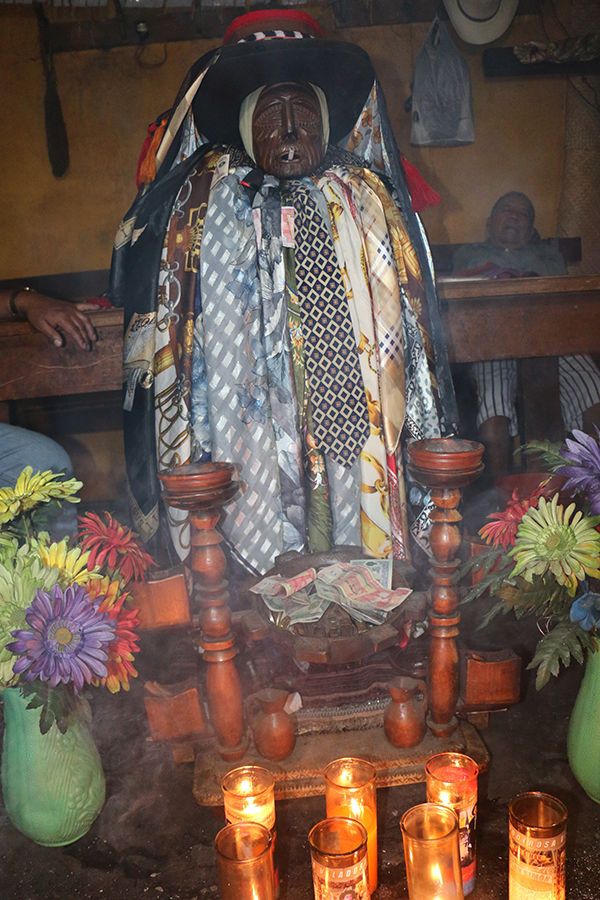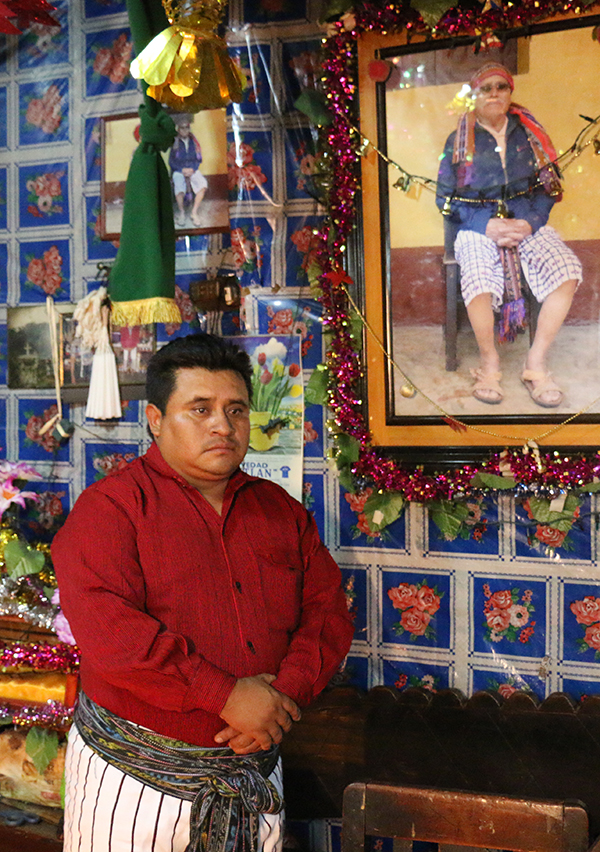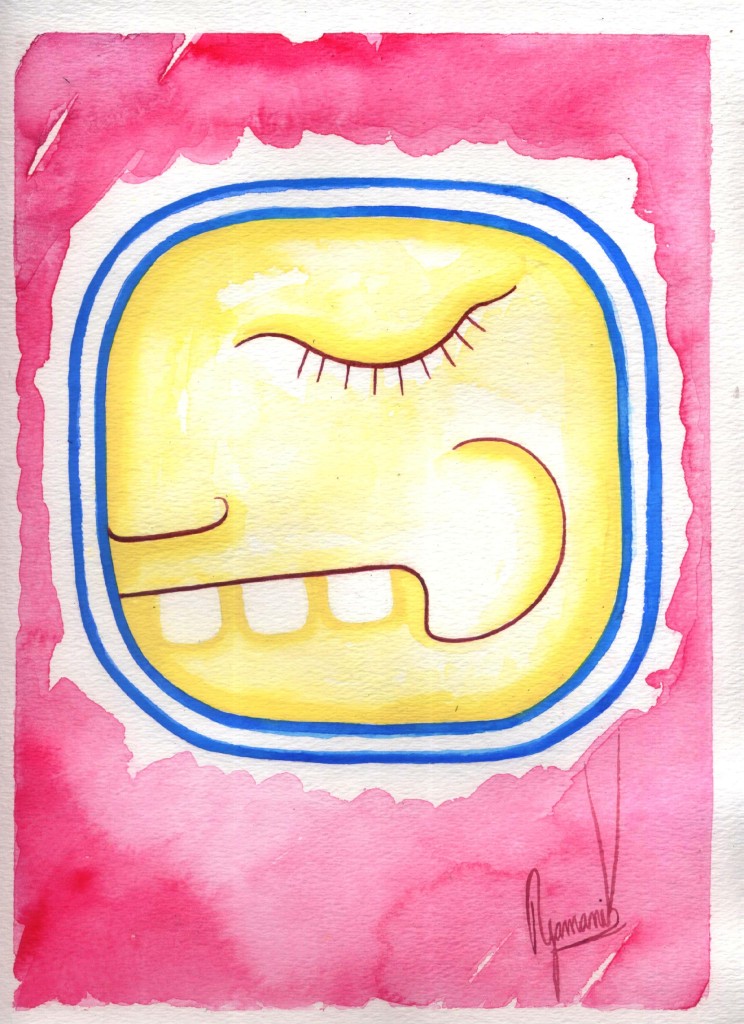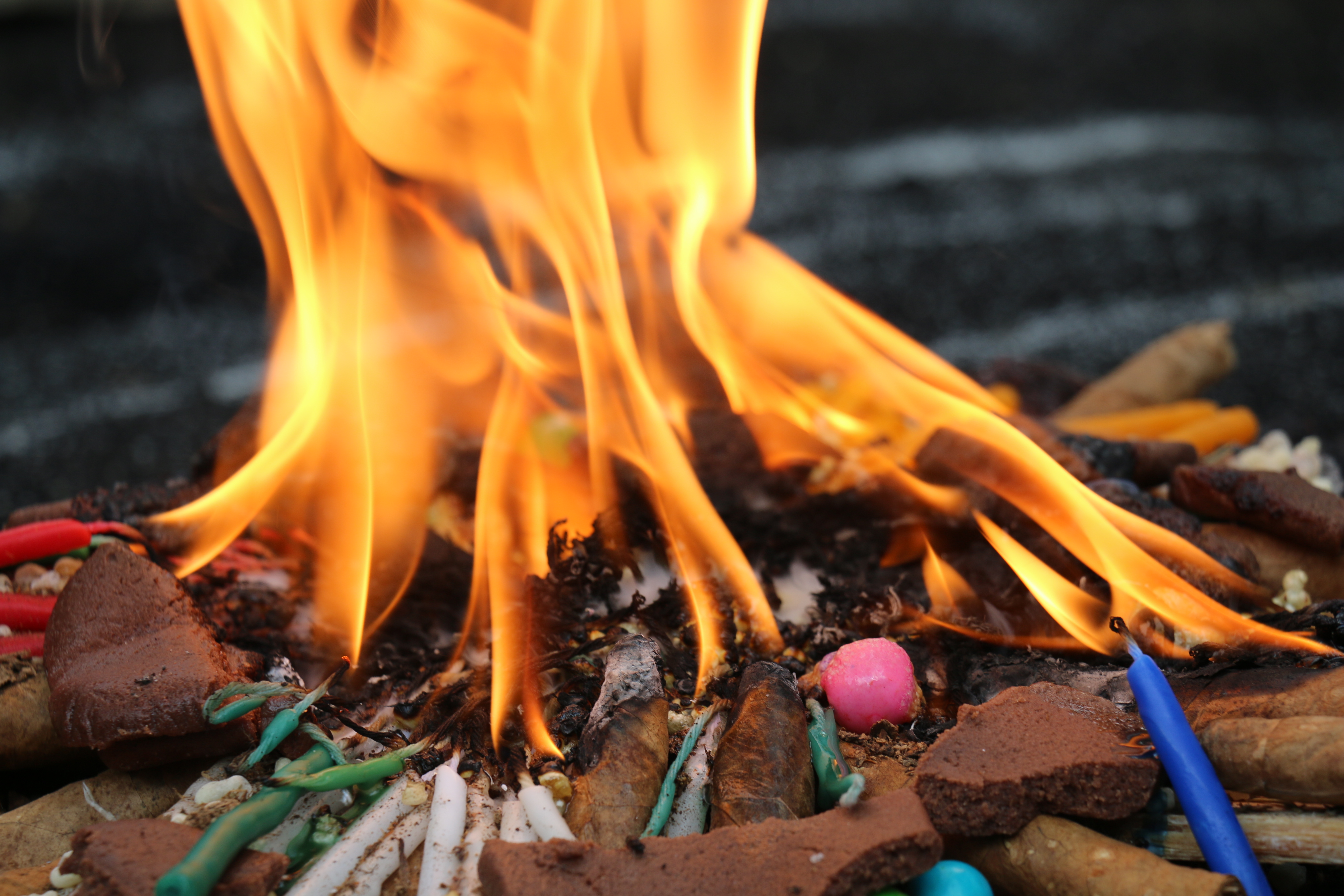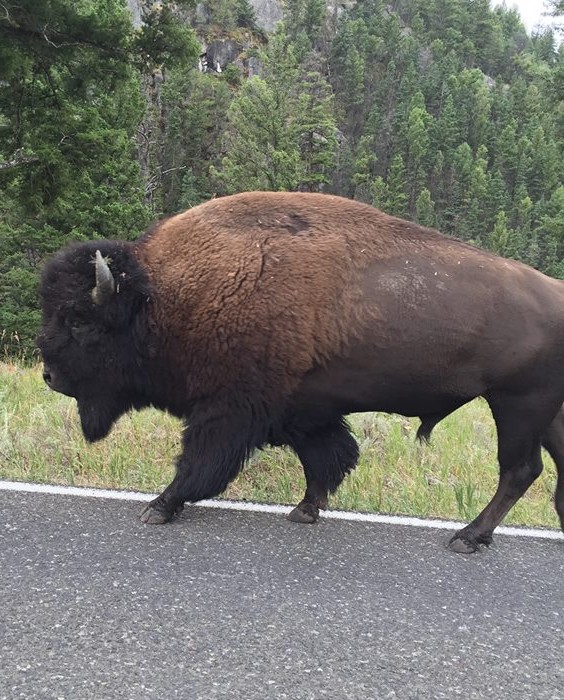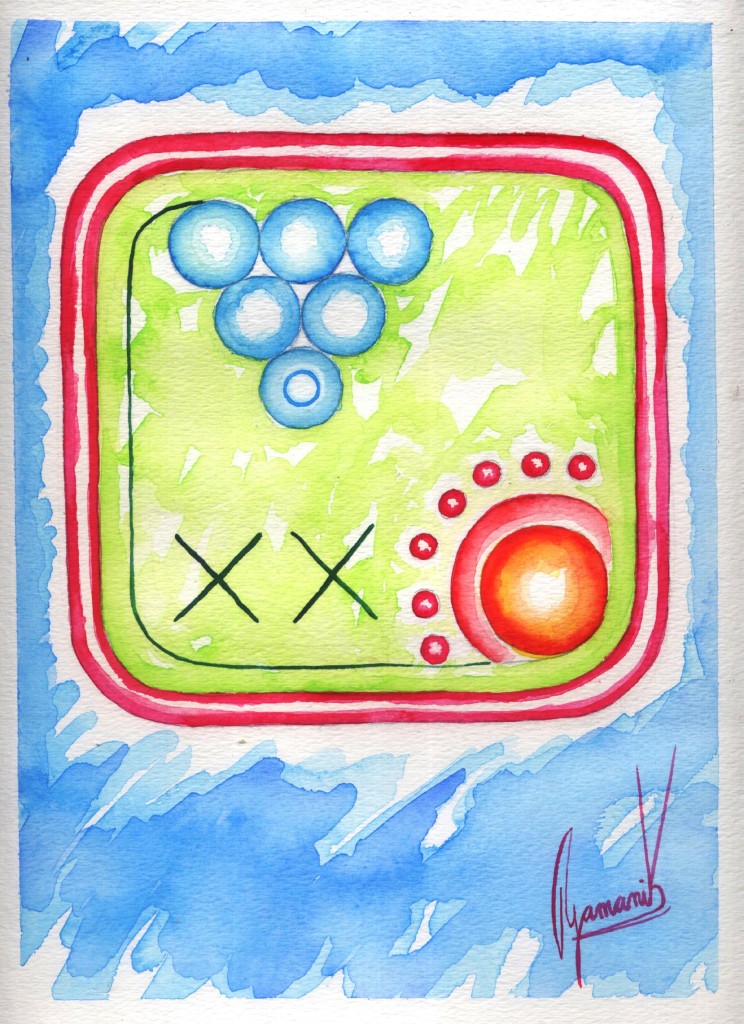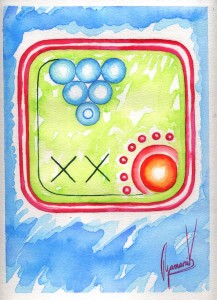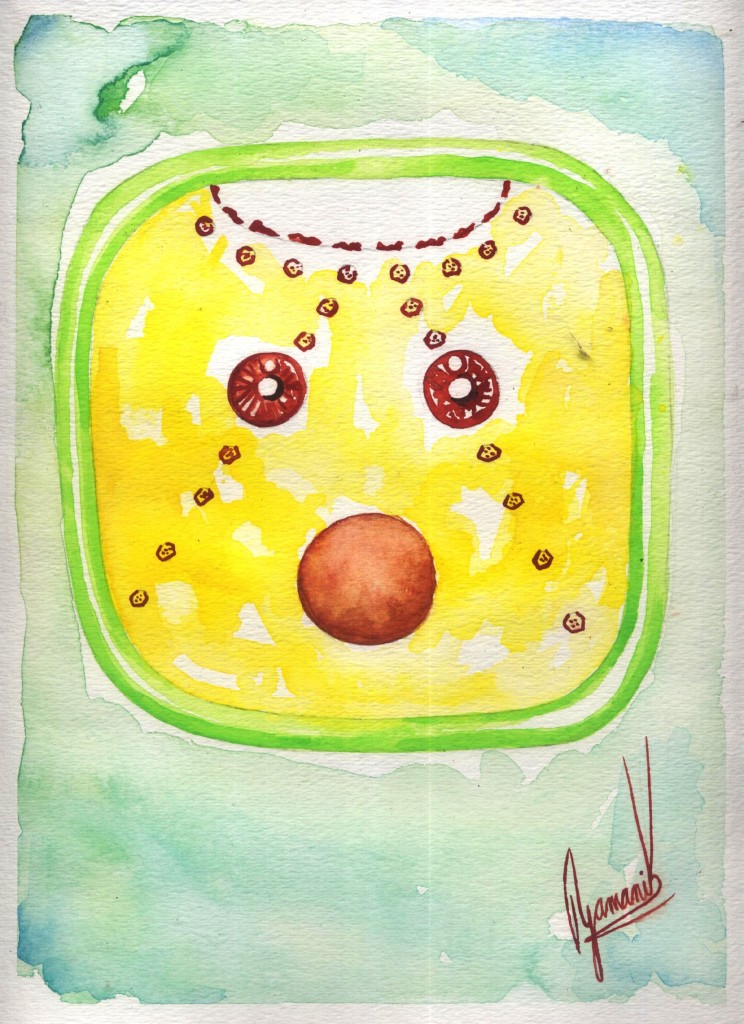 Number 3 stands for the results of your actions. Ajpu represents the hunter and the warrior; it brings material and spiritual certainty. Every decision you make in life opens a path of possibilities for you, the things and situations that are meant for you will come to your life.
Number 3 stands for the results of your actions. Ajpu represents the hunter and the warrior; it brings material and spiritual certainty. Every decision you make in life opens a path of possibilities for you, the things and situations that are meant for you will come to your life.
All posts by Adam Rubel
11 Kan – Today’s Maya Day Sign (Ch’umil)
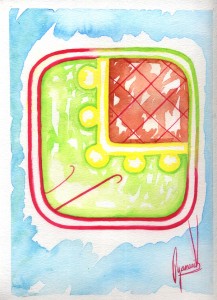 Kan, represented by the feathered serpent, is the energy of transmutation, of transforming knowledge into wisdom, thought into action. Number 11 is the energy that brings us the experiences we need for our learning and development, it is the tests we transmute into knowledge. This is an excellent day to meditate on what experience has taught you, to allow those experiences to help you change and improve.
Kan, represented by the feathered serpent, is the energy of transmutation, of transforming knowledge into wisdom, thought into action. Number 11 is the energy that brings us the experiences we need for our learning and development, it is the tests we transmute into knowledge. This is an excellent day to meditate on what experience has taught you, to allow those experiences to help you change and improve.
Support Saq’ Be’ this Season!
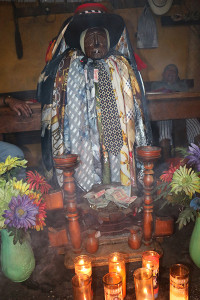 Thank you to everybody that participated in our December fundraising event! You all stepped forward with an amazing show of support, helping us to raise around $2K! Your generosity will propel us to achieve amazing things in 2016. It’s never too late to make a donation. A special thank you to those that claimed the prizes, offered below.
Thank you to everybody that participated in our December fundraising event! You all stepped forward with an amazing show of support, helping us to raise around $2K! Your generosity will propel us to achieve amazing things in 2016. It’s never too late to make a donation. A special thank you to those that claimed the prizes, offered below.
Donate online to Saq’ Be’ by the end of the year and have a chance to claim some amazing prizes! As we work hard to raise support to continue and expand programs and offerings, Saq’ Be’ will be offering some unique and special prized to our supporters that step up with contributions before the end of the year. Here are the details:
Top donations received online between December 1st and December 31st will be eligible for the following prizes:
 Original Painting by Yamanik Pablo of your unique Ch’umil, including number, sent from Guatemala. Yamanik painted all of the Ch’umil used on the SacredRoad.org website. Minimum Donation $300 to be eligible. One available.
Original Painting by Yamanik Pablo of your unique Ch’umil, including number, sent from Guatemala. Yamanik painted all of the Ch’umil used on the SacredRoad.org website. Minimum Donation $300 to be eligible. One available.
Personal Maya Chart Reading by Maya Ajq’ij and author of the Book of Destiny Carlos Barrios. Minimum Donation $200 to be eligible. Two Available.
Jade Necklace of your individual Ch’umil sent from Guatemala. Minimum Donation $50 to be eligible. Two available.
Free entry into an upcoming online workshop with a Maya Ajq’ij (Spiritual Guide). Minimum Donation $25 to be eligible. Two available.
Donation leaders will be updated on this page on Monday’s leading up to December 31st, beginning on December 7th. Donations made during this period will be cumulative: If you make a $100 donation then a $200 donation, your total will be listed as $300 (and you will be eligible to receive the top prize if you are the top donor). Items sent from Guatemala may take up to several months to arrive. All donations are tax-exempt in accordance with US Tax law.

Current Donation Leaders
Thank you so much to all the contributors that make the work of Saq’ Be’ possible!
$300+ Level (Custom Ch’umil Painting – 1)
Chad and Brinda J. – $1,000
$200+ Level (Personal Maya Chart Reading – 2)
Cathie S. – $500
Heidi C. – $200
$50+ Level (Jade Ch’umil Necklace – 2)
Susan H. – $50
Linda C. – $50
$25+ Level (Online Workshop – 2)
Juliet C. – $25
Alicia C. – $25
Syncretism in the Maya Culture
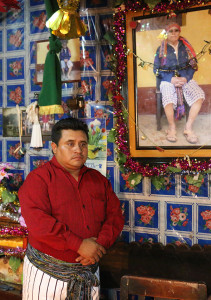 Thanks to our friends Jim and Brenda with the Oasis Theater Company, we are pleased to be able to share this video that features elder Juan Manuel Mendoza discussing the way that traditional Maya culture and spirituality has been embedded in Santiago Atitlan. He shares a tour of the church in Santiago that embodies traditional imagery, often featuring Ri Laj Mam (Maximon). This embedding within the church has been a key to the survival and vitality of the Maya traditions for the last several hundred years. Thank you to Juan Manuel for your generosity in sharing this information with us!
Thanks to our friends Jim and Brenda with the Oasis Theater Company, we are pleased to be able to share this video that features elder Juan Manuel Mendoza discussing the way that traditional Maya culture and spirituality has been embedded in Santiago Atitlan. He shares a tour of the church in Santiago that embodies traditional imagery, often featuring Ri Laj Mam (Maximon). This embedding within the church has been a key to the survival and vitality of the Maya traditions for the last several hundred years. Thank you to Juan Manuel for your generosity in sharing this information with us!
Juan Manuel Mendoza, a Maya elder from Santiago Atitlan, talks about Maya syncretism with the Catholic Church. Here we see one of the many examples of how the Maya incorporate their belief system and ideology in the midst of an imposed religion and philosophy. It demonstrates the resilience and tenacity of the Maya people as they continue to practice their beliefs in their homeland.
10 Kame – Today’s Maya Day Sign (Ch’umil)
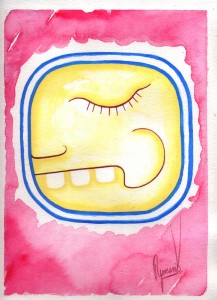 Number 10 symbolizes the communication with the Cosmic and Telluric energies. Kame is the energy of our ancestors, of our spiritual and family lineage. The energies of this day open a channel that connects us with other dimensions and allows our ancestors to guide us and advise us. Light a purple candle to honor the memory of those who have parted and to thank them for their help and guidance.
Number 10 symbolizes the communication with the Cosmic and Telluric energies. Kame is the energy of our ancestors, of our spiritual and family lineage. The energies of this day open a channel that connects us with other dimensions and allows our ancestors to guide us and advise us. Light a purple candle to honor the memory of those who have parted and to thank them for their help and guidance.
Momma, Don’t Let Your Babies Grow Up To Be Tourists! Pt.2
This is the second in a series of blog posts that explores the possibility of transforming the way our current civilization leads us to live upon the earth. Can we change from living as though we are tourists in our own home to becoming the responsible co-evolutionary partners we see historically and within many modern Indigenous cultures?
 In the last blog post, we explored the way Indigenous inhabitants have been treated in the name of conservation. In many ways, we can consider this conservation approach to be the other side of the same coin that reveals the exploitation of people and the earth in the name of extraction of resources. Both stem from a cosmological belief that the earth itself is in-animate, a non-living entity that hosts resources (above and below ground) that can be exploited. There is a cause and effect relationship between the way we view our place in the world and the world we help to create.
In the last blog post, we explored the way Indigenous inhabitants have been treated in the name of conservation. In many ways, we can consider this conservation approach to be the other side of the same coin that reveals the exploitation of people and the earth in the name of extraction of resources. Both stem from a cosmological belief that the earth itself is in-animate, a non-living entity that hosts resources (above and below ground) that can be exploited. There is a cause and effect relationship between the way we view our place in the world and the world we help to create.
What becomes possible when we recognize that a people’s relationship to the earth arises from a culture and cosmology that recognizes the sacredness of life, arising from a co-evolutionary journey of millennia between people and place?
The following example demonstrates both our disconnected relationship with nature and a return to those who understand it most deeply. Northern California has experienced extreme drought conditions, which has brought with it historic wild fires. Fire conditions have been made worse by decades of fire suppression tactics, caused by a cosmology of control and domination, which had the effect of limiting smaller fires while unintentionally laying the groundwork for the massive fires we have today. As the realization that this approach has failed has spread over the last few decades, more naturally occurring wildfires were allowed to burn, which has led to limited success.
Now officials in California are turning to the Amah Mutsun and North Fork Mono Tribes amongst others to learn and implement pro-active fire management techniques that build the overall vitality of the ecosystem while changing the conditions that lead to the catastrophic fires of recent years. Native forestry practices such as these, which include clearing meadows that serve as fire-barriers and water repositories, have historic precedent in creating the abundant North-American (as well as other places globally) landscape that settlers marveled at. The myth of a pristine environment, with native people living innocently off of its abundance is just that – a myth. Undoubtedly, the cosmological framework embedded in the culture and practices of these and other peoples gave rise to an improved land – and life for the people.
If we take a moment to reflect upon our current cosmologies and how they play out in our culture and practices, are the effects upon ecologies and people’s evident? What is the opportunity we have to transform the foundations of how we view and relate to the world in order to create a different effect?
Native traditional methods revived to combat California drought, wildfires
Momma, Don’t Let Your Babies Grow Up To Be Tourists!
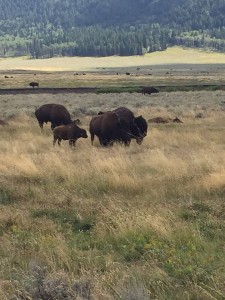 As Autumn arrives, we have a chance to reflect upon the passing Summer. Here in the US, warm weather and kids out of school conspire during this season to bring about one of our long-held cultural rituals: Summer Vacation! Now, before traveling down the path of considering vacation (a period of suspension of work, study, or other activity, usually used for rest, recreation, or travel; recess or holiday) as an indulgence of western culture, we learned on a trip to the Amazon that villagers occasionally travel with their families deeper into the jungle for brief periods to escape the stresses of village life, fish and relax. Digression aside, this year my family took our annual trip to Pine Ridge, SD, then seized an opportunity to spend some time on the road camping and visiting some of the remarkable lands (and sea) of the western US. One of these early stops included Yellowstone National Park, considered by some to be the Serengeti of North America due to its diverse array of visible wildlife and impressive geysers and land formations. The sites did not disappoint – but the tourists…and the culture of tourism.
As Autumn arrives, we have a chance to reflect upon the passing Summer. Here in the US, warm weather and kids out of school conspire during this season to bring about one of our long-held cultural rituals: Summer Vacation! Now, before traveling down the path of considering vacation (a period of suspension of work, study, or other activity, usually used for rest, recreation, or travel; recess or holiday) as an indulgence of western culture, we learned on a trip to the Amazon that villagers occasionally travel with their families deeper into the jungle for brief periods to escape the stresses of village life, fish and relax. Digression aside, this year my family took our annual trip to Pine Ridge, SD, then seized an opportunity to spend some time on the road camping and visiting some of the remarkable lands (and sea) of the western US. One of these early stops included Yellowstone National Park, considered by some to be the Serengeti of North America due to its diverse array of visible wildlife and impressive geysers and land formations. The sites did not disappoint – but the tourists…and the culture of tourism.
When I say “culture of tourism”, I am referring to the sense of not belonging, of passing through without feeling responsible for the improved well-being of the land and people that welcome you as a guest. Extracting experience without exchanging a meaningful contribution, and sometimes not even respecting the hospitality. So, we found ourselves in the tourist sea, taking in sites and experience without feeling or finding a meaningful connection or contribution. What led our national parks to be paved with this kind of cultural experience? Well, a little digging and we find that the history of “pristine” and protected areas is born out of a mindset that believes that humans have little, if anything to contribute to the benefit of the natural world. We can see it, look at it, but interact with it as little as possible or we will mess it up.
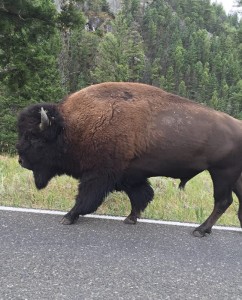 Indeed, humans are terraformers, we’ve been shaping our world since as long as we have walked this earth. We have done it well and we have done it poorly. One of the key shifts we must make is in returning to see humans as a part of nature, not separate from it, and to learn from the Indigenous populations that have co-evolved upon this earth for millennia so that we may regenerate places around the planet. In National Parks, a historical look back reveals how our dominant world view evicted those best suited to manage it, then brought them back in for display to tourists. As the article below points out, this history continues to live today in “conservation” efforts around the world.
Indeed, humans are terraformers, we’ve been shaping our world since as long as we have walked this earth. We have done it well and we have done it poorly. One of the key shifts we must make is in returning to see humans as a part of nature, not separate from it, and to learn from the Indigenous populations that have co-evolved upon this earth for millennia so that we may regenerate places around the planet. In National Parks, a historical look back reveals how our dominant world view evicted those best suited to manage it, then brought them back in for display to tourists. As the article below points out, this history continues to live today in “conservation” efforts around the world.
In subsequent articles, I’ll bring forward examples that highlight the growing awareness of traditional knowledge and wisdom that places humans within living cosmologies is guiding us to terraform our world in a much better way – led by the lineages that live within Indigenous communities.
The Forgotten History Of ‘Violent Displacement’ That Helped Create The National Parks
7 Kawoq – Today’s Maya Day Sign (Ch’umil)
2 I’x – Today’s Maya Day Sign (Ch’umil)
The Importance of Sacred Places
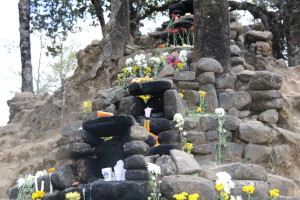 Throughout the history of human life on this planet, Sacred Places have been identified and revered for their spiritual, ecological and cultural importance. Our relationship to these places has nourished our evolution and been integral in shaping cosmological beliefs. As the movement into our modern civilization has brought us from the sacred to the profane, our relationship to these places has shifted from reverence of its living being towards commodification of its material resources. The world’s remaining Indigenous peoples have been bearing the weight for generations of resisting this endless tide of extractive impulses to both maintain the places and the sacred relationships to them that extend back through millenia.
Throughout the history of human life on this planet, Sacred Places have been identified and revered for their spiritual, ecological and cultural importance. Our relationship to these places has nourished our evolution and been integral in shaping cosmological beliefs. As the movement into our modern civilization has brought us from the sacred to the profane, our relationship to these places has shifted from reverence of its living being towards commodification of its material resources. The world’s remaining Indigenous peoples have been bearing the weight for generations of resisting this endless tide of extractive impulses to both maintain the places and the sacred relationships to them that extend back through millenia.
Our efforts have brought us to this forefront many times, including the effort in Sarayaku, Ecuador to resist oil extraction and in Guatemala where access and protection to these sites are often under threat. The good news is, as Christopher McLeod points out in the article below, resistance to this exploitation is growing and we have an opportunity to turn back to those that have sustained the relationship to Sacred Places to re-shape the role that humans serve upon this earth, and in doing so, better realize our collective potential. This path forward requires supporting both the sacred places and the people that best protect and honor them, so that we may learn to reframe the way we “develop” with the earth, beginning with an honoring and recognition of our sacred relationships.
Why Sacred Places Should Matter, Even to Business Folks


